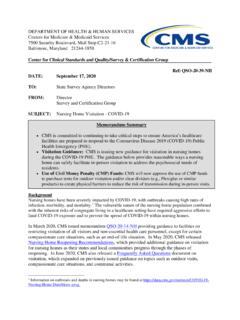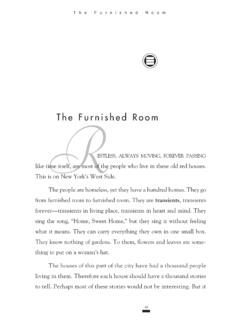Transcription of Burn Injuries in Child Abuse
1 Department of Justice Office of Justice Programs Office of Juvenile Justice and Delinquency Prevention Burn Injuries in Child Abuse Portable Guides to Investigating Child Abuse Foreword Our most defenseless children are the most likely to be burned intentionally. Child Abuse burn victims are almost always under the age of 10 with the majority under the age of 2. Immediate identification of intentional burn victims by those individuals first responding to the call for assistance is crucial because most of the victims are unable to speak for themselves. It is also important that responsible caretakers not be unjustly accused.
2 In this guide you will find information that will assist you to distinguish intentional burns from accidental contact with hot objects. Burn Injuries in Child Abuse provides both guidance on determining the veracity of a caretaker's report by re-creating the incident and a burn evidence worksheet for use at the scene of an investigation. Information regarding the distinctions between immersion and contact burns is also included. It is our hope that information in this guide will be of use to law enforcement as we all work to protect our children. Original Printing May 1997. Second Printing June 2001. NCJ 162424.
3 A. lthough general awareness of the magnitude of Child Abuse is increasing, deliberate injury by burning is often unrecognized. Burn Injuries make up about 10. percent of all Child Abuse cases, and about 10 percent of hospital admissions of children to burn units are the result of Child Abuse . In comparison with accidentally burned children, abused children are significantly younger and have longer hospital stays and higher mortality rates. The Child burn victim is almost always under the age of 10, with the majority under the age of 2. Children are burned for different reasons. Immersion burns may occur during toilet training, with the perpetrator immersing the Child in scalding water for cleaning or punishment.
4 Hands may be immersed in pots of water for playing near the stove. A person may place a Child in an oven for punishment or with homicidal intentions. Inflicted burns often leave characteristic patterns of injury that, fortunately, cannot be concealed. Along 1. with the history of the burn incident, these patterns are primary indicators of inflicted burns versus accidental ones . Findings in response to the following questions can raise or lower the index of suspicion, helping to determine whether a burn was deliberately inflicted: Is the explanation of what happened consistent with the injury? Are there contradictory or varying accounts of the method or time of the accident or other discrepancies in the witnesses'.
5 Descriptions of what happened? Does the injury have a clean line of demarcation, parts within or immediately around the injured area that are not burned, a burn pattern inconsistent with the injury account, or any other of the typical characteristics of an inflicted burn? Are the burns located on the buttocks, the area between the Child 's legs, or on the ankles, wrists, palms, or soles? Are other Injuries present such as fractures, healed burns, or bruises? Are the Child 's age and level of development compatible with the caretaker's and witnesses' accounts of the injury? Was there a delay in seeking medical attention?
6 Smaller burns may have been treated at home. Does the caretaker insist there were no witnesses, including the caretaker, to the injury incident? Do those who were present seem to be angry or resentful toward the Child or each other? A detailed history, including previous trauma, presence of recent illnesses, immunization status, and the status of routine medical care, is critical, as is careful documentation of the scene of the injury, including photographs and drawings. To investigate a burn injury: Stay focused on the facts in front of you and proceed slowly and methodically. Ask questions, be objective, and reenact the incident.
7 Treat each case individually. The incidence of further injury and death is so high in deliberate burn cases that it is critical for all concerned persons to be aware of the indicators of this form of Child Abuse . 2. The following descriptions provide . information about the various types of accidental and nonaccidental burns children may incur. Scald burns are the most common type. They may be caused by any hot liquid . hot tap water, boiling water, water-like liquids such as tea or coffee, and thicker liquids such as soup and grease. Scald burns may be either a spill/splash type of burn or an immersion burn, the most common of the liquid burn Injuries .
8 Most deliberate burns are caused by tap water. Contact burns are usually of the branding type and will mirror the object used to cause the injury curling iron, steam iron, cigarette lighter, fireplace or hibachi grill, and heated kitchen tool or other implement. Young children have thinner skin than adults; therefore, a Child 's skin will be destroyed more rapidly and by less heat. Thicker skinned areas of the body include the palms, soles, back, scalp, and the back of the neck. Thinner skinned areas are the front of the trunk, inner thighs, bottom of forearms, and the inner arm area. It is important to work with the emergency medical personnel, who were probably the first persons to see the Child 's Injuries , hospital personnel, and social services investigators.
9 Classification of Burns The preferred classification of burns used by most physicians is partial or full thickness (see table 1, page 4). Only an experienced medical practitioner can make a determination of how deep a burn is, but there are some features of partial and full thickness burns that can be observed immediately after the incident. Patches of reddened skin that blanch with fingertip pressure and refill are shallow partial thickness burns. Blisters usually indicate deeper partial thickness burning, especially if the blisters increase in size just after the burn occurs. A leathery or dry surface with a color of white, tan, brown, red, or black represents a full thickness burn.
10 The Child feels no pain because the nerve endings have been destroyed. Small blisters may be present but will not increase in size. 3. Table 1. Classification of Burns Classification Characteristics First degree Partial thickness burns. Characterized by erythema (localized redness). Appear sunburn-like. Are not included when calculating burn size. Usually heal by themselves. Second degree Partial thickness burns. Part of skin has been damaged or destroyed. Have blisters containing clear fluid. Pink underlying tissue. Often heal by themselves. Third degree Full thickness burns. Full skin has been destroyed.
















